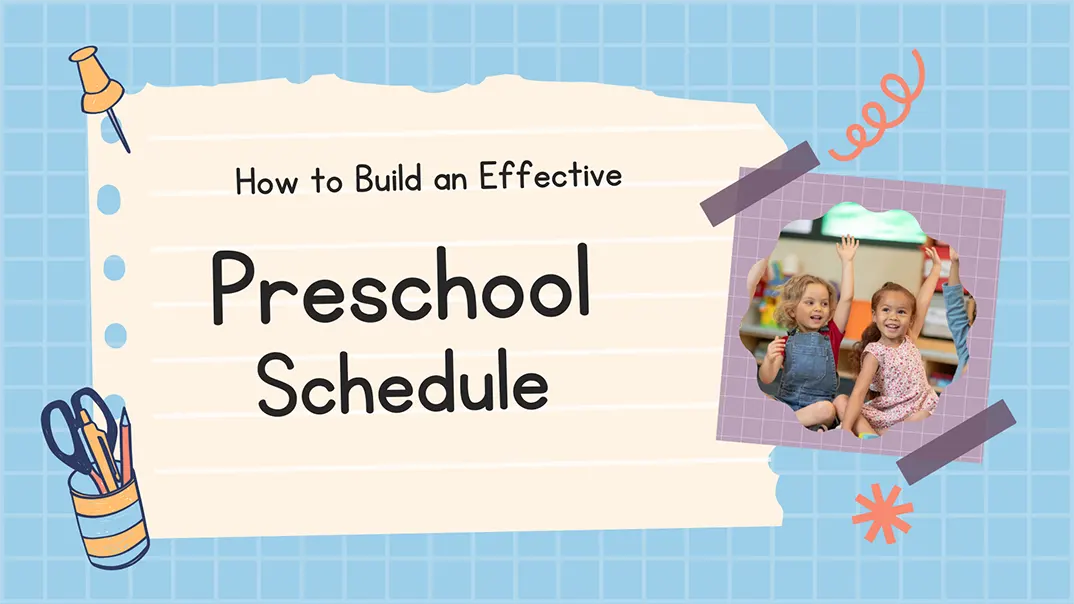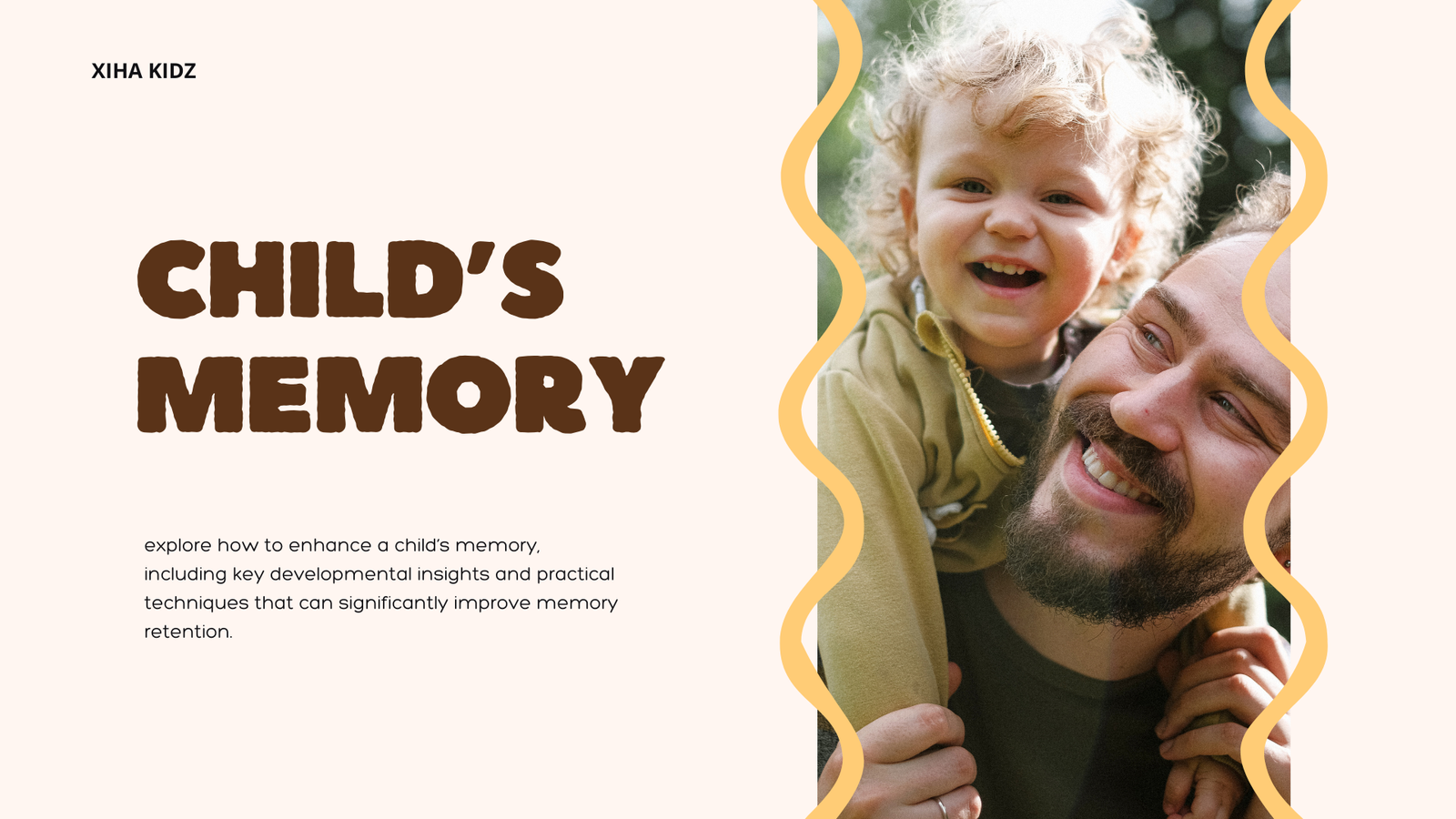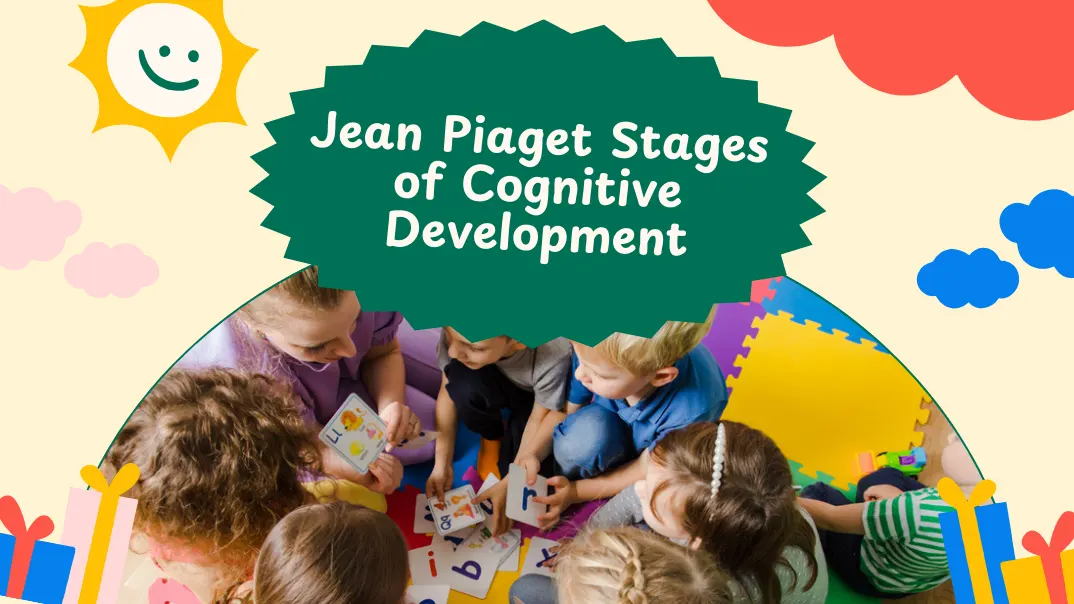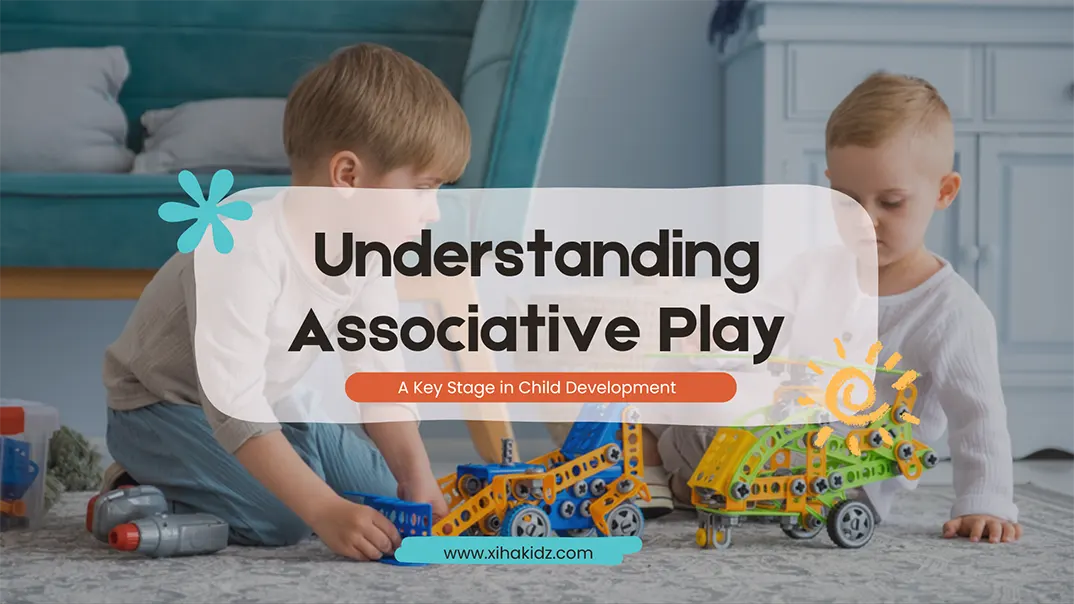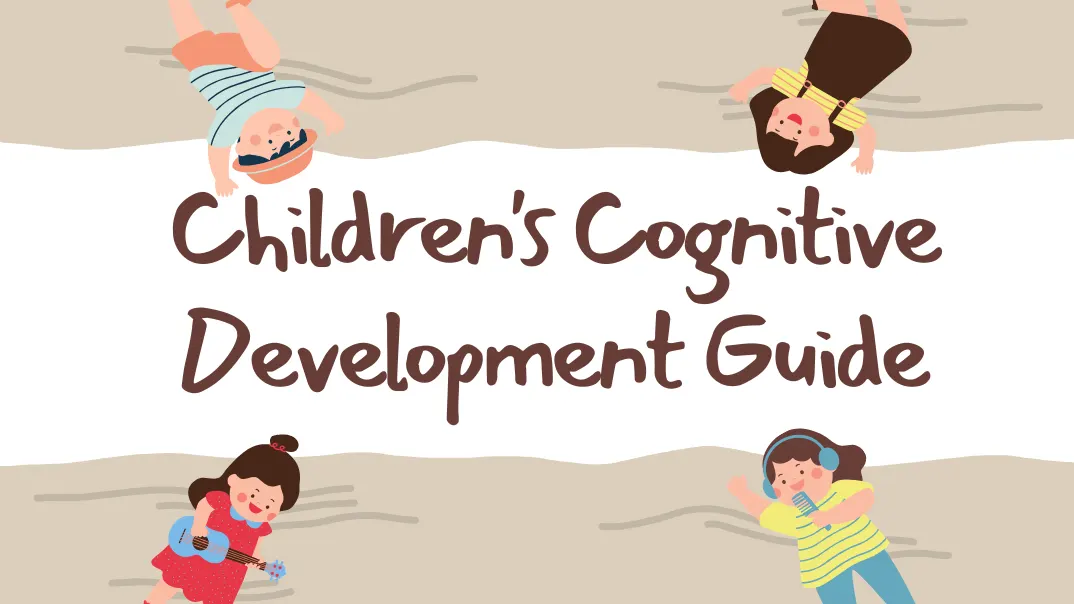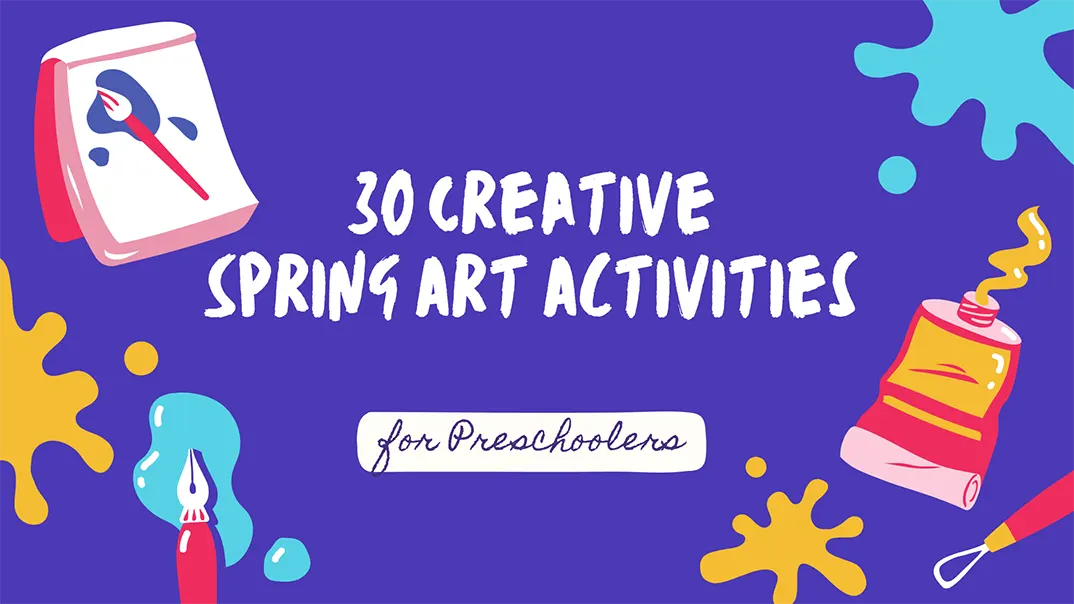As a preschool educator or parent, you may have noticed that a structured schedule brings a sense of security and helps children understand what to expect throughout their day. But how do you design a schedule that balances learning with play and rest? And how can you ensure it’s flexible enough to meet the needs of the children?
The key to building a successful preschool schedule is balancing structured activities and free play while always considering the children’s developmental needs. A well-organized schedule ensures that kids stay engaged, feel secure, and have the opportunity to explore, learn, and rest in a balanced environment. By considering their natural rhythms and preferences, you can create a schedule that works for everyone.
Creating a preschool schedule that works isn’t as difficult as it might seem. In the following sections, I will walk you through the essential elements of an effective daily routine for preschoolers and how you can implement them in your classroom.
Why a Preschool Schedule is Important?
A preschool schedule plays a vital role in the development of young children, offering more than just a routine. For children, especially those in their formative years, a predictable structure fosters a sense of security and helps build positive habits that can last a lifetime.
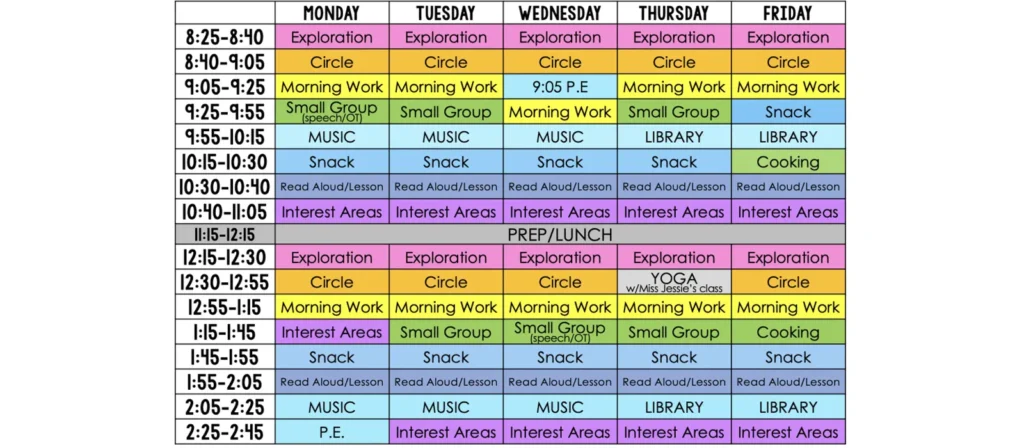
Promotes Security and Stability: Preschool-aged children thrive on consistency and routine. Knowing what to expect throughout the day helps children feel secure, reducing anxiety. A well-structured schedule allows them to anticipate transitions (like moving from playtime to snack time), which promotes emotional stability.
Encourages Independence and Self-Regulation: When children know what activities will happen next, they take ownership of their time. For example, knowing it’s time to clean up after play teaches children responsibility and fosters self-regulation. Over time, they learn to manage their actions based on a set schedule, which helps them adapt to various environments.
Fosters Development of Time Management Skills: A preschool schedule encourages early time management skills. Children start to understand the concept of time through various activities—be it story time, outdoor play, or even nap time. These early skills lay the foundation for better organization and prioritization in the future, all while maintaining a sense of fun.
Maximizes Learning Opportunities: Structured preschool schedules help educators plan balanced days that incorporate all necessary elements of a child’s development—academic activities, social interaction, physical play, and quiet moments. When schedules are thoughtfully designed, no part of a child’s development is overlooked, and each hour is purposefully used to enrich their learning experience.
Helps Educators and Parents Track Progress: A clear preschool schedule allows teachers and parents to track a child’s progress more effectively. Knowing exactly how much time a child spends on educational tasks versus play activities makes it easier to identify strengths and areas for growth. Teachers can adjust the schedule to focus on areas where children need extra support.
The Basics of a Preschool Daily Schedule
Creating a preschool schedule that works requires thoughtful planning and an understanding of the needs of young children. Below are the basic elements to consider when establishing a preschool schedule.
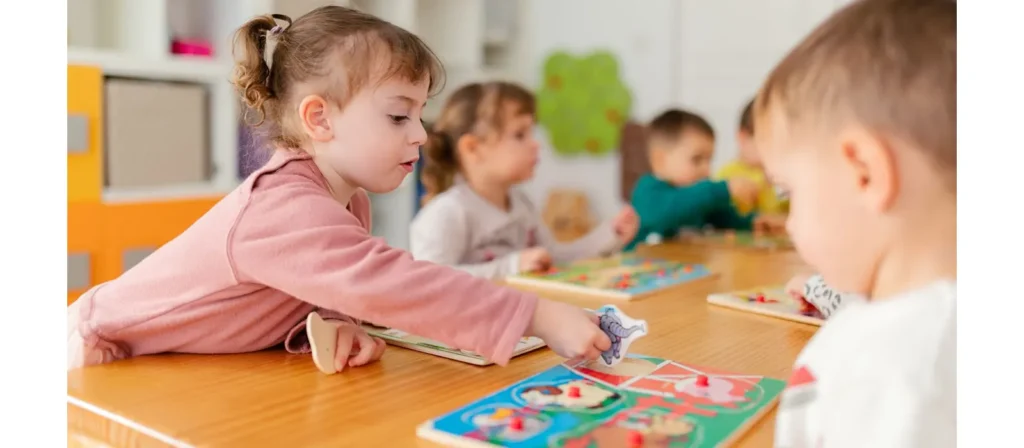
1. Start with Consistent Arrival Time
A predictable start to the day helps children feel safe and secure. Set a consistent arrival time, allowing for flexibility based on parents’ schedules. When children arrive, provide a calm activity such as free play or a simple greeting to help them transition smoothly into the day.
2. Morning Circle Time
Circle time is a key part of the preschool day. This time should include greetings, a review of the schedule, and perhaps a short educational activity such as a song, a weather check, or a calendar activity. Circle time helps children feel part of the group and establishes a sense of community.
3. Learning Activities
Plan specific learning activities that are aligned with your preschool curriculum. These may include story time, arts and crafts, or simple science experiments. Keep the time for each activity between 20-30 minutes to match preschoolers’ attention spans. Rotate the types of activities to keep things interesting and engaging.
4. Snack Time
Preschoolers need regular snacks to stay energized. Offer a short snack break, ensuring a mix of healthy options. Snack time is also a social opportunity where children can practice sharing and conversation skills.
5. Outdoor Play or Physical Activity
Incorporate outdoor play or physical activities into the daily schedule for preschool. Whether running outside, playing games, or exploring nature, outdoor time is essential for motor skill development and helps children expend energy. Plan for at least 30 minutes to an hour of outdoor play, depending on weather conditions.
6. Quiet Time or Nap
Preschoolers need downtime to recharge. A quiet time or nap in the middle of the day is essential for helping children rest. Even if a nap isn’t required for every child, quiet activities like reading or calming music can provide a restorative break.
7. Group Activities and Play
In addition to individual activities, include time for group play and collaborative activities. Group play helps children develop social skills, practice teamwork, and learn conflict resolution. Provide opportunities for both structured group activities (e.g., group art projects or games) and unstructured free play.
8. Closing Circle or Reflection Time
End the day with a short closing circle. Use this time to review the day, sing a final song, or allow children to share something they enjoyed. This helps children transition from the structured day into going home and provides closure for the day.
9. Pick-Up Time
Create a consistent, calm procedure for pick-up. This helps children feel prepared and relaxed as their day ends. Inform parents or caregivers about their child’s day and ensure a smooth transition.
Transform Your Classroom with Custom Furniture Solutions
Tips for Teachers and Caregivers to Build a Preschool Schedule
Creating a structured preschool schedule fosters a productive and calming learning environment. A well-planned schedule helps children feel secure and understand the day’s routine, which supports their development in key areas such as cognitive, social, and emotional skills. Here are some tips to help you design an effective schedule for your preschool classroom.

1. Establish a Consistent Routine
A structured preschool schedule begins with consistency. Preschoolers thrive on routine because it gives them a sense of security and predictability. Aim to have similar activities happen at the same time every day. For example, circle time, snack breaks, and playtime should occur at designated intervals each day to help children understand the flow of time.
2. Break the Day into Manageable Segments
Preschoolers have short attention spans, so breaking the day into smaller chunks helps them stay engaged. Activities like circle, group, and quiet reading should typically last 20-30 minutes. For active play or outdoor time, aim for about 45 minutes to give children enough space to use their energy.
3. Balance Structured and Unstructured Time
While structured activities are important, unstructured playtime is equally crucial for preschoolers. Children need opportunities to engage in free play, which allows them to explore their creativity and develop social skills. Ensure your daily preschool schedule includes plenty of time for free play, both indoors and outdoors.
4. Incorporate Learning and Fun
Incorporate a mix of educational and playful activities into the schedule. Activities like arts and crafts, songs, and sensory play stimulate children’s learning while making the experience fun. A balanced mix keeps children engaged and motivated to participate throughout the day.
5. Prioritize Transitions
Transitions between activities can be tricky for young children, who may have difficulty switching gears. To help, include short transition activities like songs, finger plays, or simple directions to make moving from one activity to the next smoother. A clear structure for transitions will reduce confusion and help children stay focused.
6. Be Flexible
Although it’s important to follow a routine, flexibility is key. Sometimes, activities take longer than planned, or children may need additional time to finish a task. Allowing some wiggle room in your preschool schedule ensures that children’s needs are met, and it can reduce stress for both you and the children.
Infant Schedule
A well-structured infant daycare schedule supports a child’s development. It should be tailored to meet each infant’s developmental milestones and needs. Below, we outline key developmental milestones and offer a sample schedule to guide the planning of daily activities, ensuring a balanced and nurturing environment for infants.
Infant Development Milestones
When creating an infant daycare schedule, it’s essential to consider the unique physical, cognitive, and emotional needs associated with each developmental stage.
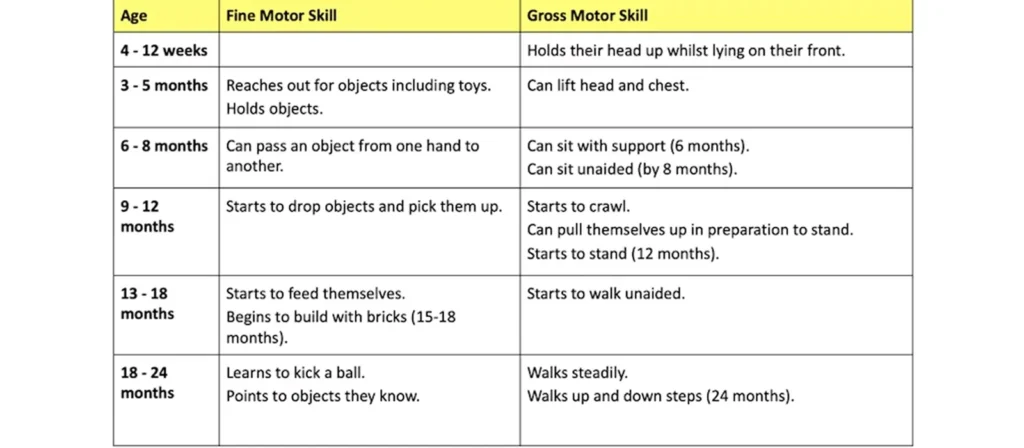
1. 0 to 3 Months:
- Physical Development:
- Lifts head briefly when lying on stomach.
- Reflexes such as grasping and sucking are prominent.
- Makes jerky arm and leg movements.
- Cognitive Development:
- Focuses on faces, follows objects with eyes.
- Begins to recognize voices and sounds.
- Social/Emotional Development:
- Smiles in response to others.
- Begins to make eye contact.
2. 4 to 6 Months:
- Physical Development:
- Rolls over both ways (front to back, back to front).
- Reaches for and grabs objects.
- Can sit with support.
- Cognitive Development:
- Explores objects by putting them in the mouth.
- Shows interest in different textures and shapes.
- Social/Emotional Development:
- Laughs and may squeal.
- Recognizes familiar faces and begins to show a preference for familiar people.
3. 7 to 9 Months:
- Physical Development:
- Sits up without support.
- Crawls or scoots on tummy.
- Begins pulling up to a standing position.
- Cognitive Development:
- Understands object permanence (knows that objects still exist even when out of sight).
- Responds to own name and simple words like “no” or “bye-bye.”
- Social/Emotional Development:
- May experience separation anxiety.
- Shows clear preferences for certain people or toys.
4. 10 to 12 Months:
- Physical Development:
- Stands briefly without support and may take steps.
- Can pick up small objects with thumb and forefinger (pincer grasp).
- They begin to walk independently, though they may still be unsteady.
- Cognitive Development:
- Imitates actions and behaviors, like clapping hands.
- Points at objects to get attention.
- Social/Emotional Development:
- Shows a range of emotions, from joy to frustration.
- Shows attachment to primary caregivers and may be shy around strangers.
Sample Infant Daily Schedule
Here’s a Sample Infant Daycare Schedule for reference. When creating a preschool schedule, it’s important to consider each infant’s needs, growth stages, and specific requirements. The times below are examples and can be adjusted to fit the daycare’s routine.
- 8:00 am – 9:00 am: Drop-off + bottles/breakfast
- 9:00 am – 9:30 am: Diapers
- 9:30 am – 10:00 am: Tummy time + sensory play (toys, soft textures)
- 10:00 am – 10:20 am: Bottles/morning snack
- 10:20 am – 10:40 am: Diapers/clean up
- 10:40 am – 11:40 am: Nap time
- 11:40 am – 12:00 pm: Bottles/lunch
- 12:00 pm – 12:30 pm: Storytime (books + songs)
- 12:30 pm – 1:00 pm: Outdoor time (stroller walk or safe area)
- 1:00 pm – 2:00 pm: Nap time
- 2:00 pm – 2:30 pm: Bottles/snack
- 2:30 pm – 3:30 pm: Sensory play (rattles, soft toys)
- 3:30 pm – 4:30 pm: Individual playtime
Toddler Schedule
A toddler kindergarten schedule is essential for helping young children establish daily routines that support their growth. When creating a schedule, it’s important to consider the toddler’s developmental milestones, such as motor skills, language, and social abilities.
Toddler Development Milestones
Toddlers experience rapid growth and development as they move from infancy into their preschool years. Between the ages of 1 and 3, toddlers undergo significant milestones in various areas, including motor skills, language, cognitive abilities, and social-emotional growth. Here’s a breakdown of key milestones you can expect at different stages:
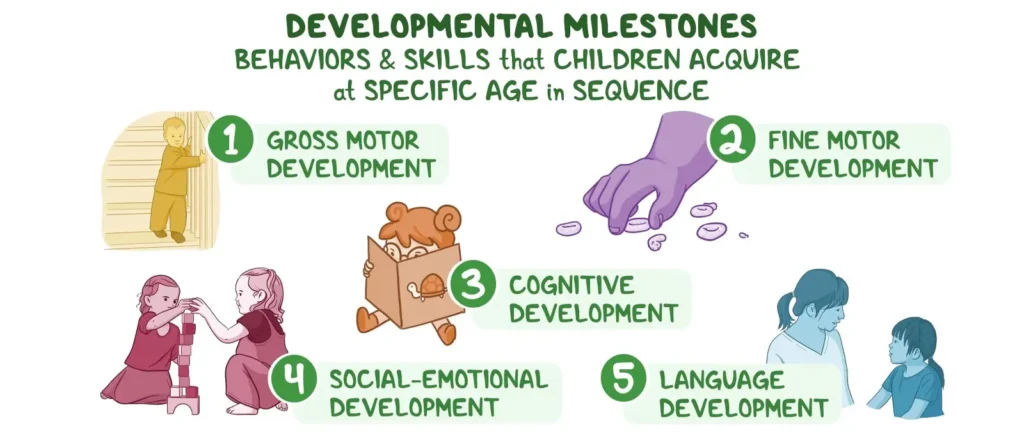
1 to 1.5 Years (12-18 months)
- Motor Skills:
- Walks independently and may start running.
- Can pick up small objects and hold a spoon or cup.
- Language Development:
- Understand simple commands like “come here” or “give me.”
- Says a few simple words (like “mama” or “dada”).
- Cognitive Skills:
- Shows interest in exploring surroundings.
- Begins to understand object permanence (knows things still exist when out of sight).
- Social-Emotional Development:
- May show fear of strangers.
- Can express emotions like happiness or frustration.
1.5 to 2 Years (18-24 months)
- Motor Skills:
- Can walk steadily and may begin to run or climb.
- Kicks balls, throws objects, and begins to stack blocks.
- Language Development:
- Vocabulary grows to 50-100 words.
- Starts to combine two words (“want cookie”).
- Cognitive Skills:
- Begins problem-solving (e.g., figuring out how to stack blocks).
- Understands simple instructions like “put the toy in the box.”
- Social-Emotional Development:
- Exhibits signs of independence (wants to do things “by myself”).
- Experiences temper tantrums due to frustration or inability to express needs.
2 to 2.5 Years (24-30 months)
- Motor Skills:
- Climbs on classroom furniture, runs more confidently, and can kick a ball in the right direction.
- Begins to draw simple shapes or scribble.
- Language Development:
- Vocabulary expands to 200-300 words.
- Can form short sentences (e.g., “I want more juice”).
- Cognitive Skills:
- Starts to engage in pretend play (feeding a doll, pretending to drive a car).
- Recognizes and names common objects and body parts.
- Social-Emotional Development:
- Displays a desire for peer interaction but may struggle with sharing.
- Can express basic emotions (happiness, sadness, anger) more clearly.
2.5 to 3 Years (30-36 months)
- Motor Skills:
- Jumps both feet off the ground and balances on one foot for a few seconds.
- Begins to dress and undress with help.
- Language Development:
- Vocabulary reaches 500+ words.
- Uses simple sentences and asks questions (“What’s that?”).
- Cognitive Skills:
- Begins to understand time concepts (yesterday, today).
- Can solve simple puzzles and follow multi-step instructions.
- Social-Emotional Development:
- Develops stronger friendships and engages in more complex pretend play.
- Shows empathy by comforting others when they are upset.
Sample Toddler Daycare Schedule
Here is a sample toddler daycare schedule, which is only a guideline and can be adjusted based on the children’s needs and the specific daycare environment. When creating a kindergarten daily schedule, it’s important to consider factors such as the children’s development stages, preferences, and any specific routines that might be necessary.
- 8:00 am – 9:00 am: Drop-off + breakfast
- 9:00 am – 9:20 am: Diapers/Toilet breaks
- 9:20 am – 9:50 am: Circle time (simple books + songs)
- 9:50 am – 10:10 am: Morning snack
- 10:10 am – 10:30 am: Diapers/clean up
- 10:30 am – 11:15 am: Interactive play (building blocks, puzzles)
- 11:15 am – 11:45 am: Lunch
- 11:45 am – 12:15 pm: Storytime (books + songs)
- 12:15 pm – 1:00 pm: Outdoor play/gross motor activities (running, climbing)
- 1:00 pm – 1:45 pm: Nap time or quiet rest
- 1:45 pm – 2:00 pm: Snack
- 2:00 pm – 2:45 pm: Sensory or creative art activity (drawing, playdough)
- 2:45 pm – 4:00 pm: Individual play time (exploring toys)
Preschool Schedule
A balanced and structured preschool schedule is essential to foster a child’s growth and development. It helps children understand daily routines, promotes learning, and provides play, meals, and rest time. Below, you’ll find examples of a full-day and half-day preschool schedule to provide insight into how a typical day in preschool can be structured.
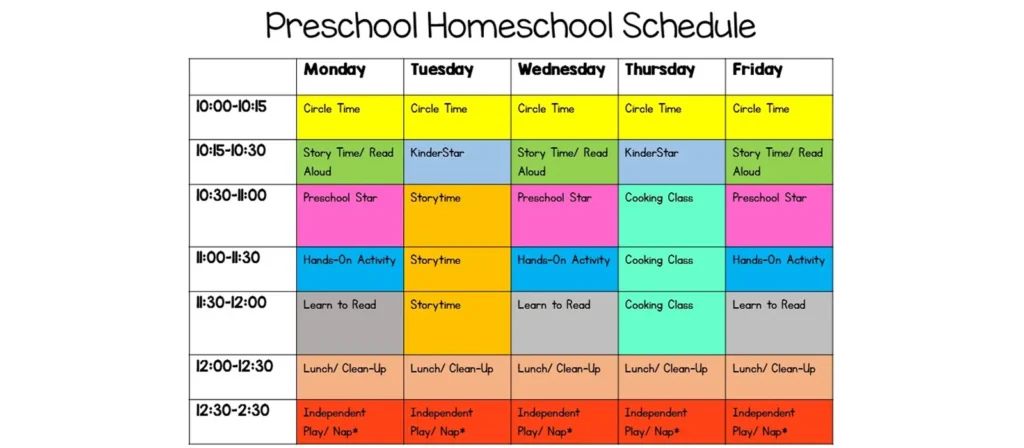
Preschool Daily Schedule Example
From structured learning time to free play and rest, the daily preschool schedule includes various activities contributing to a well-rounded preschool experience. The example below outlines how a day can be organized to balance fun and learning for young children.
- 8:00 am – 9:00 am: Drop-off + breakfast
- 9:00 am – 9:30 am: Diapers/Toilet breaks
- 9:30 am – 9:55 am: Circle time (stories, songs, puppets)
- 9:55 am – 10:15 am: Morning snack
- 10:15 am – 10:30 am: Diapers/clean up
- 10:30 am – 11:15 am: Learning activity (counting, colors, arts)
- 11:15 am – 11:45 am: Lunch
- 11:45 am – 12:15 pm: Storytime (books + songs)
- 12:15 pm – 1:00 pm: Outdoor play/gross motor time (running, group games)
- 1:00 pm – 1:45 pm: Quiet time/rest or nap
- 1:45 pm – 2:00 pm: Snack
- 2:00 pm – 2:45 pm: Sensory or creative activity (painting, crafting)
- 2:45 pm – 4:00 pm: Individual play time (building, pretend play)
Half-day Preschool Schedule Example
The following half-day preschool schedule example showcases how to balance stimulating activities and necessary breaks, all within a few hours, to keep children engaged and energized throughout the morning.
- 8:00 am – 8:30 am: Drop-off + breakfast
- 8:30 am – 9:00 am: Diapers/Toilet breaks
- 9:00 am – 9:30 am: Circle time (stories, songs, puppets)
- 9:30 am – 9:50 am: Morning snack
- 9:50 am – 10:10 am: Diapers/clean up
- 10:10 am – 10:40 am: Learning activity (counting, colors, arts)
- 10:40 am – 11:00 am: Outdoor play/gross motor time (running, group games)
- 11:00 am – 11:30 am: Storytime (books + songs)
- 11:30 am – 12:00 pm: Lunch
- 12:00 pm – 12:30 pm: Quiet time/rest or nap
- 12:30 pm – 1:00 pm: Free play and Departure
How to Balance Flexibility and Structure
A structured preschool schedule doesn’t mean rigid, non-negotiable blocks of time. Preschoolers are unpredictable, and life happens—sometimes, the schedule must adapt. How can you balance flexibility and structure in your preschool schedule?

Adapt to Children’s Needs
While following a structured routine is important, the children’s needs should always come first. Switching gears and offering a calming break might be best if a child struggles with an activity.
Allow for Spontaneity
Building in some flexibility for spontaneous moments can make your preschool schedule even more dynamic. If the kids are particularly interested in something, it can be beneficial to take a detour and explore that topic further. This keeps them engaged and makes learning fun.
Challenges in Creating a Preschool Schedule and How to Overcome Them
While a well-balanced routine benefits children’s development, creating and maintaining a functional schedule often presents several challenges. Understanding how to address these challenges can make the process more manageable and effective.
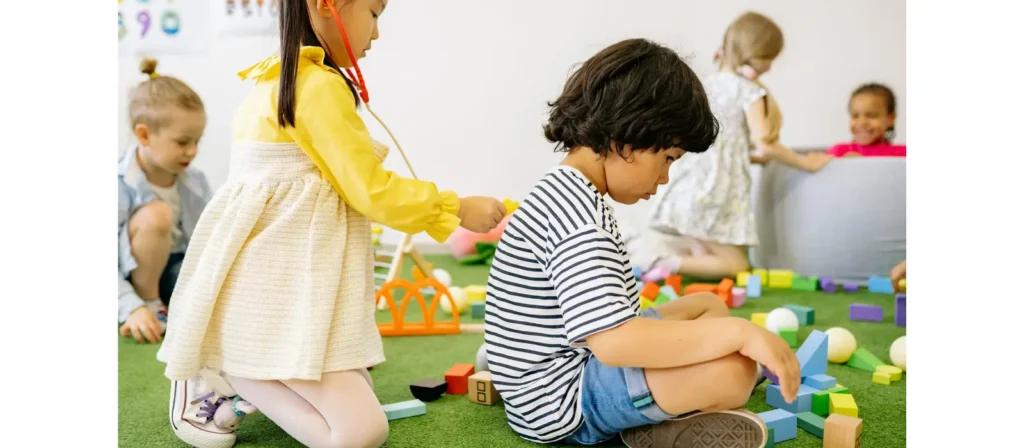
1. Struggling with Transitions
Transitions between activities can be challenging for young children, often leading to frustration or confusion. To ease these transitions, introduce visual or auditory cues, like a song or a timer, signaling when it’s time to switch activities. Giving a 5-minute warning before transitions can also help children prepare mentally, making the change smoother and more predictable.
2. Balancing Structured and Free Play
Finding the right balance between structured activities and free play can be tricky—too much structure may stifle creativity, while too much free time can lead to disengagement. A good solution is to alternate between the two: after focused learning or group activities, provide time for unstructured play, allowing children to recharge and engage in creative, independent activities.
3. Managing Energy Levels
Preschoolers have varying energy levels, and too much physical activity can lead to overstimulation or fatigue. To manage this, balance high-energy activities with quiet time. After more intense activities, such as outdoor play, the daily schedule for kindergarten includes relaxing activities like storytime or nap time so children can unwind and be ready for the next round of play.
4. Limited Individual Attention
In a group setting, providing individual attention to every child can be a challenge. To address this, use small-group activities where you can give more focused support while other children work independently. Independent tasks or station-based activities can also help ensure each child gets the attention they need without disrupting the day’s flow.
5. Balancing Flexibility and Structure
It can be difficult to keep a schedule flexible enough to adapt to children’s moods or unexpected events while still maintaining enough structure for consistency. The key is to have fixed core activities like snack and nap time while allowing flexibility in other areas. For instance, you can extend a favorite activity if the children are highly engaged or shorten it when attention starts to fade.
6. Meeting the Needs of Different Children
Preschoolers have different developmental needs, and creating a schedule that fits all can be challenging. To address this, differentiate activities to cater to various developmental stages. Offer smaller group settings for more personalized attention and adjust tasks based on the child’s needs, ensuring every child is engaged and supported.
7. Lack of Parent/Guardian Communication
Without clear communication with parents, it’s hard to understand a child’s home life and how it may impact their behavior or participation in preschool activities. Communicate regularly with parents through daily updates or weekly reports to overcome this. This helps you stay informed about changes at home, such as sleep patterns or family events, which could affect the child’s mood or needs at preschool.
8. Meeting Administrative Requirements
Preschool schedules often need to meet regulatory or curriculum requirements, which can limit flexibility. To work within these constraints, incorporate the required educational activities into play-based learning. This allows you to meet the necessary standards while keeping the day engaging, creative, and fun for the children.
Conclusion
In conclusion, a well-planned preschool schedule fosters a nurturing environment where children can thrive. By incorporating a mix of structured activities, downtime, and opportunities for free play, children can develop essential skills in a balanced way. A thoughtful daily schedule for preschoolers enhances the learning experience and promotes children’s and educators’ well-being.
Discover Our Full Range of Products
Get access to our comprehensive catalog featuring top-quality furniture and play equipment for kindergartens and schools.

